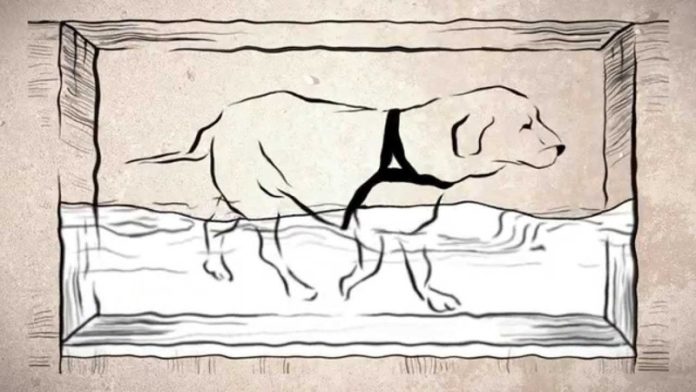Hip dysplasia in dogs occurs because of an aberrant joint structure, combined with laxity in muscles, ligaments, and connective tissue supporting the joint. The head of the femoral bone in the upper leg normally rests snugly atop the acetabulum joint socket, which thereby permits any pressure to be evenly distributed. Dysplastic dogs, on the other hand, tend to have abnormal joint-socket development; thus, the femur head tends to pop out of place and consequently causes pain and further damage. The condition once underway is very difficult to reverse.
Canine hip dysplasia occurs in dogs of all ages. Sometimes the condition appears in the young, but it can also start showing once a dog reaches his or her middle or later years. Intervention is necessary, lest the dog be unable to walk.
Some breeds tend to exhibit tendencies toward hip dysplasia. It is not unheard of for the larger breeds – such as German Shepherds and St. Bernards – to be amongst those impacted with hip dysplasia. However, smaller breeds can be, too.
A dog with hip dysplasia is in so much discomfort, which is why he or she tends to rely on the front legs. This can cause degeneration in the muscle strength of the hind legs.
While surgery is an option to alleviate hip dysplasia, it is nonetheless invasive, and can require much physical therapy – what then of those rehabilitative pets who are reclining at home? With this in mind, the Hipster Harness was designed as a full-body harness to assist canines outside the veterinary office.
Designed by Israeli industrial designer Galia Weiss, the Hipster Harness helps increase comfort and mobility. Weiss is quick to point out: “…[R]ight now there’s nothing for the home – [and rehabilitating dogs] need all-day treatment.”
The Hipster Harness is still in prototype phase. It is secured with adjustable strap and velcro fasteners “around the dog’s chest and stomach and wraps both of the back legs like a cast.” The harness also “requires a dog to use its hind legs,” and this helps strengthen them while simultaneously “keeping the femur in the correct position.” It is hoped the harness – which is machine washable and available in various color schemes – can cut down the amount of time a canine pet takes to recover from corrective surgery.
Reaction to Weiss’ invention has been positive, with many eager to see the product move past the prototype phase. Research is still being conducted, and in close collaboration with a veterinarian. Weiss acknowledges: “After I published the project I realized how many people want help… It’s given me a very strong push to continue with the project.”








